Assignment 03 3D-Design
Difference of additive and subtractive manufacturing methods
When using subtractive manufacturing methods you basically cut the shape of an object into the material. The amount of material that is available is usually fixed from the beginning. Examples for this method are for example milling and carving. Additive methods in contrast to subtractive methods do not start with a block of material. Here the whole Object is build from the scratch. 3D-Printing is a good example for this method. Here the Object is build layer by layer till ist finished. This results in a slightly rough surface. Both methods can be combined to achieve the best results.
Differences in Detail
Subtractive
- smooth surface
- in general faster result than additive methods
- suited for large scale objects
- not suitable for nested object and shapes on the inside of objects
Additive
- rough vertical surfaces
- generally slower
- not suited for large objects
- nested objects and complex shapes inside objects can be produced
3D-Design with Openscad
Openscad is a 3D-Design tool which is based on program code. Every 3D-Object is generated by an number of sequentially executed commands. It uses a functional programming language, but is also capable of using control structures like loops. I personally worked with it a lot, in my opinion one of the greatest advantages of this tool is that you can create parametric designs. So an object be customized easily by just changing a few variables. For example you design a casing for a number of devices. The produced program just takes the measurements a specific device an a snug fit casing is generated without the need of redesigning it every time.
Designing an Object
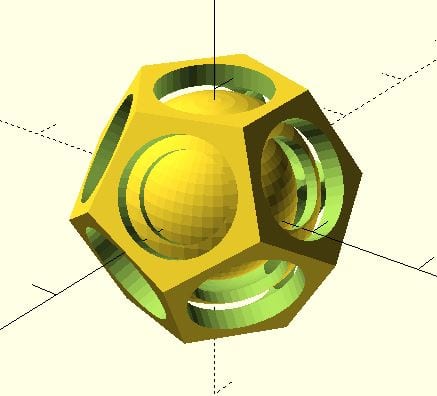
As an example I have designed this nested object to further illustrate how to use OpenScad.
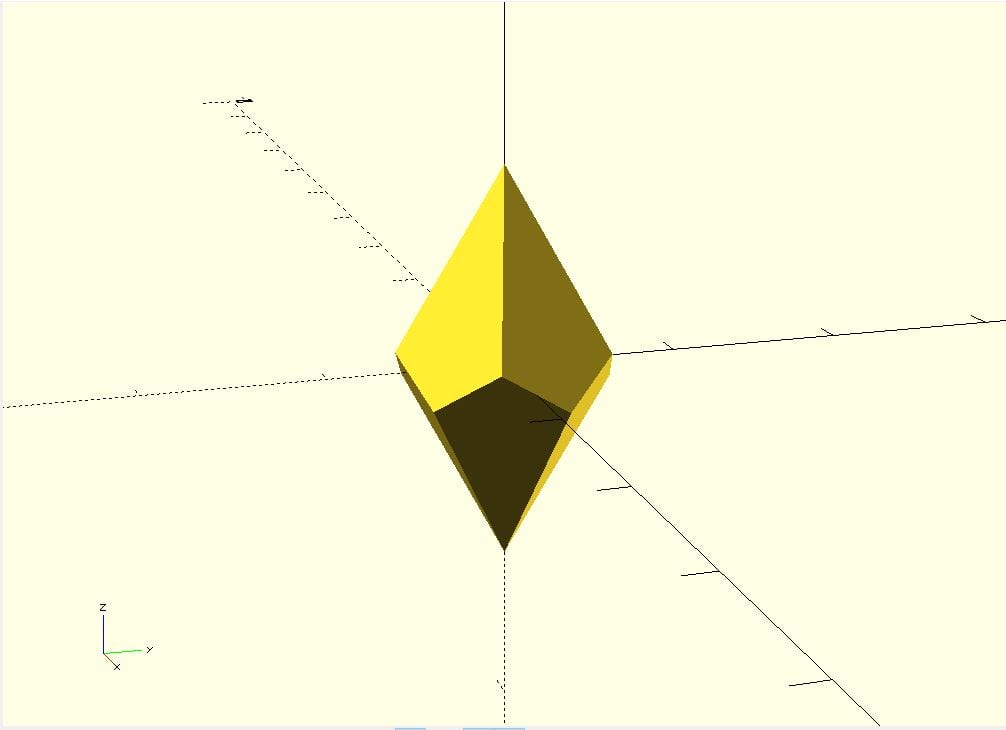

First I tried to design a dodecahedron by myself. I got the angles from Wikipedia. From a lecture I knew that you can build a dodecahedron by intersecting 6 cubes but could not get the last one right and was stuck with this diamond. Then I found out that the necessary Code already existed.
So to get this diamond 5 cubes are intersected via a for-loop utilizing a variable i. Each cube has a rotation of 116.56505° ,this was specified by the Wikipedia article. Every cube hat the measurements of 2*2*1.(Usually Open-Scad uses mm as an Unit). In every iteration such a cube will be placed and rotated by 72*i° around the z-axis. Then all of these cubes are intersected. The tag center=true ensures that every cube is centered.
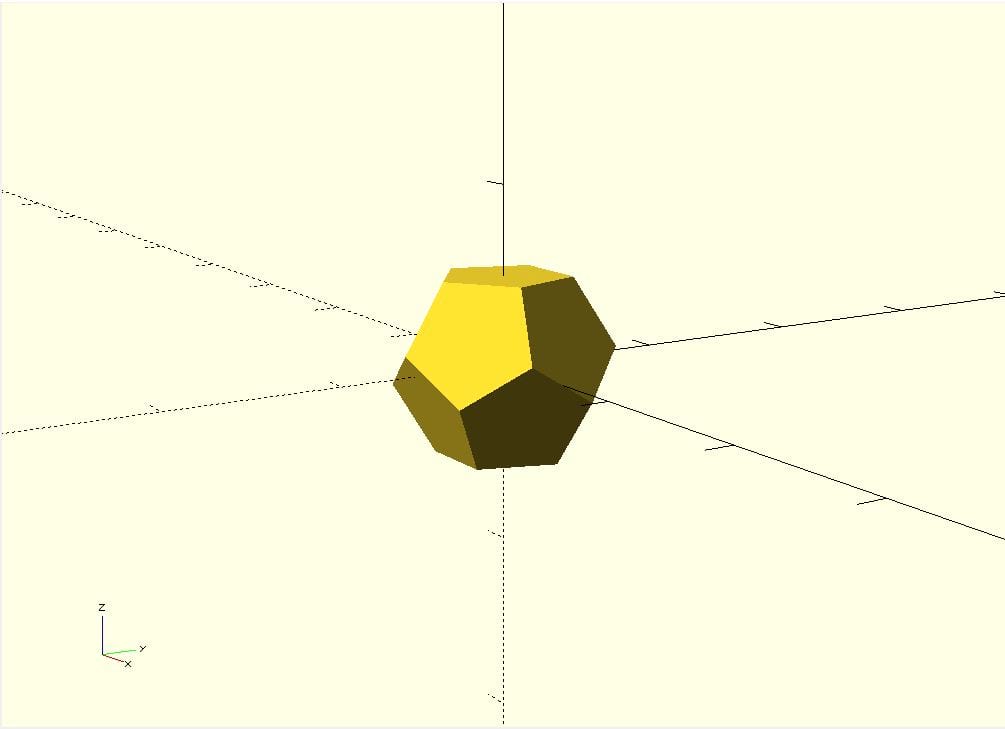
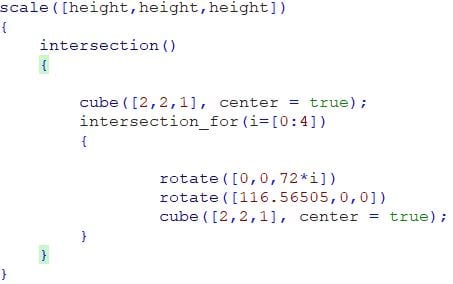
Now we add the last cube unrotated and intersect it with the diamond. To change the scaling of the dodecahedron an scaling tag is added with scales the dodecahedron uniformly in every direction.
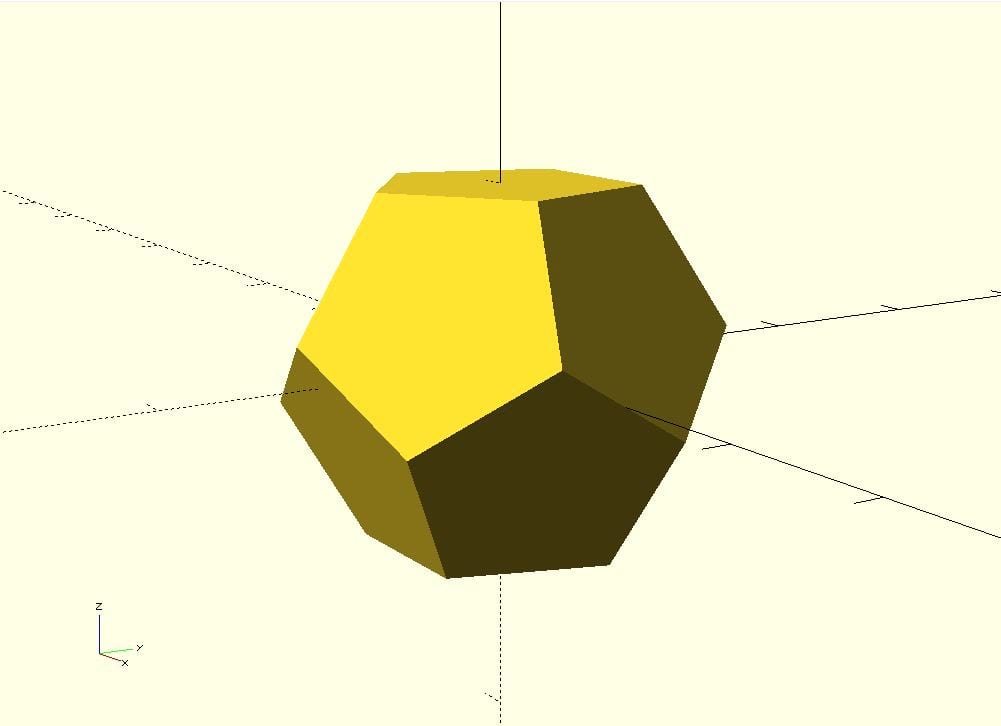

To finish this of I converted it into a module so the object can be placed and scaled via a short command. This also has the effect that the following code is readable.
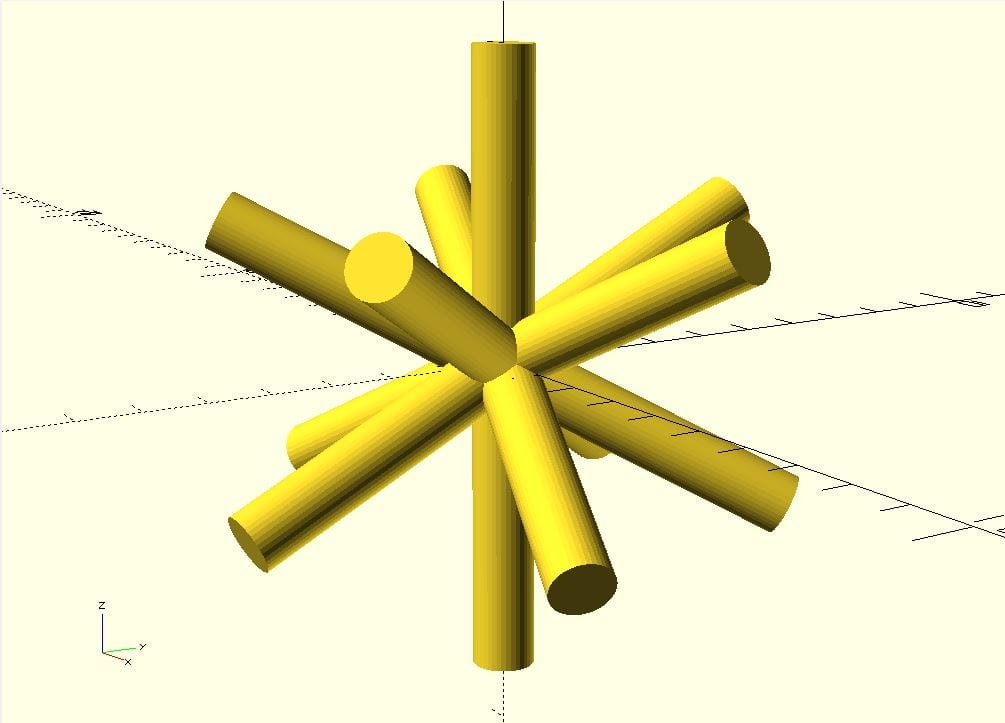

Now we want to punch the holes into the dodecahedron. To do so we need a cylinder for every face of the dodecahedron. We can modify the for loop that we used for the dodecahedron to get the orientation right. Here a cylinder with the length 10 an the radius 0.5 is used. The true is a short version of center = true and the $fn specifies how many segments the mantle of the cylinder will have. (choose high values for smooth surfaces)

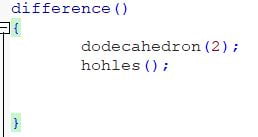
When we no calculate the difference of these two objects we get a hollow dodecahedron with holes in each of its faces.
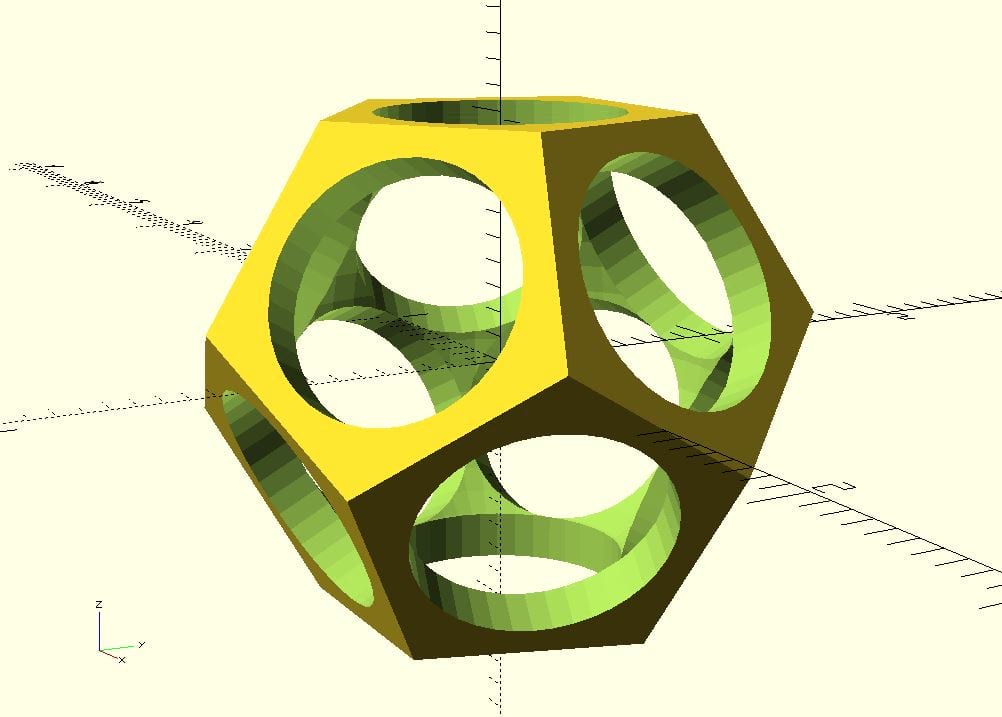

To get rid of the jags on the inside we calculate the difference withe and additional sphere with the radius of 0.95.
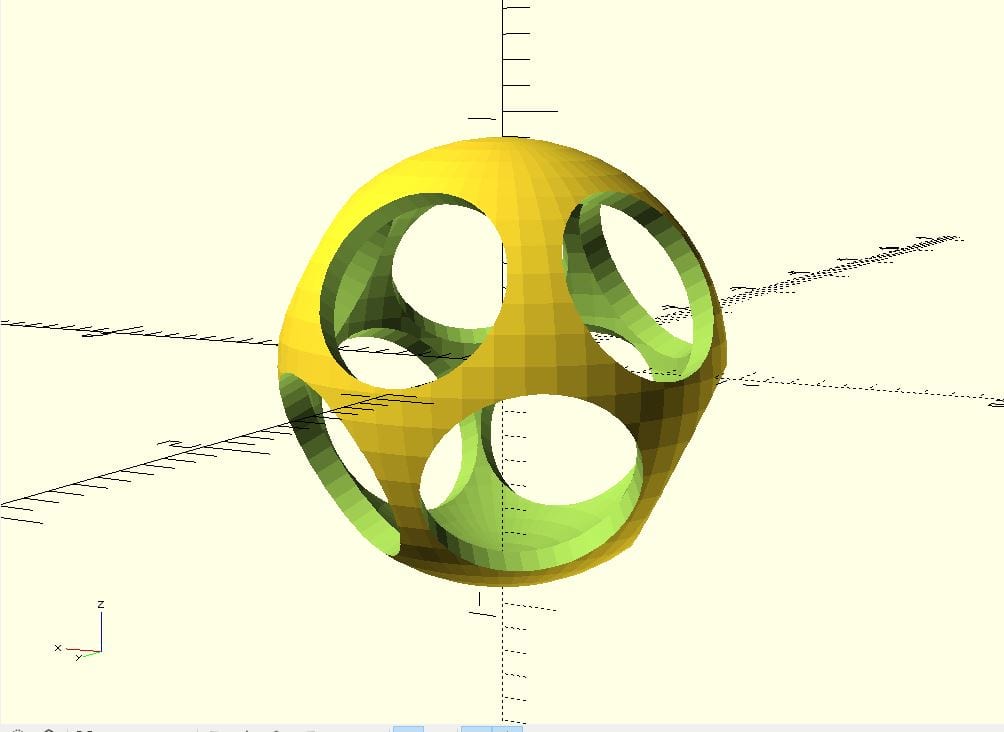
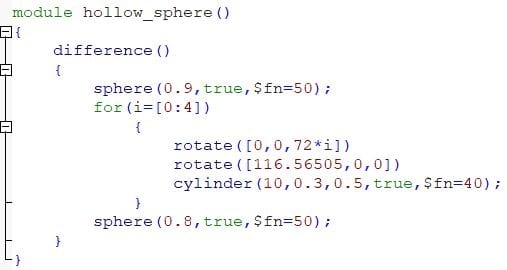
Now we create a smaller sphere with holes like the dodecahedron. Here slightly cone shaped cylinders are used for the intersection(top radius = 0.3, bottom radius = 0.5). And the horizontal cylinder is removed. so no holes are punched into the top and the bottom. To get a smooth inside surface again a smaller sphere is added to the difference calculation.
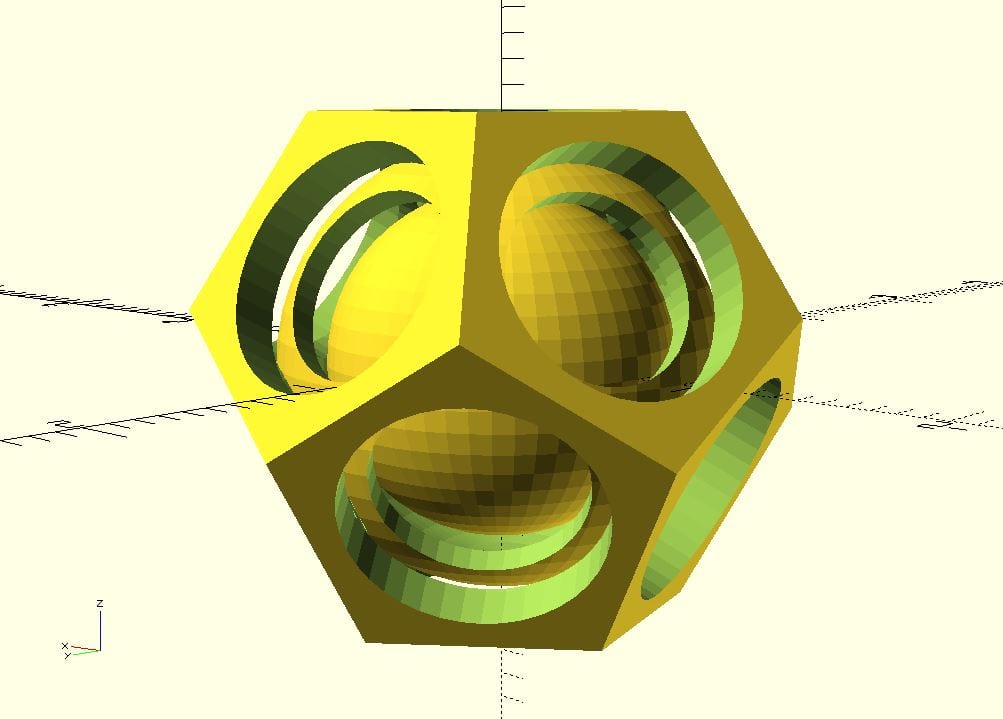
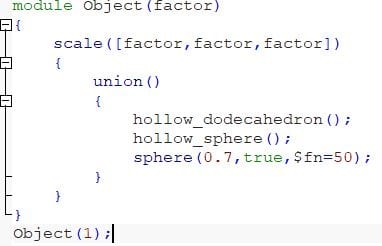
To wrap it up both object we unify both objects to one object and add a scale factor. To fill up the inside of this nested object a sphere withe the radius of 0.7 is also added to the final design.
Files
Nested dodecahedronFavourite beverage of the Assignment
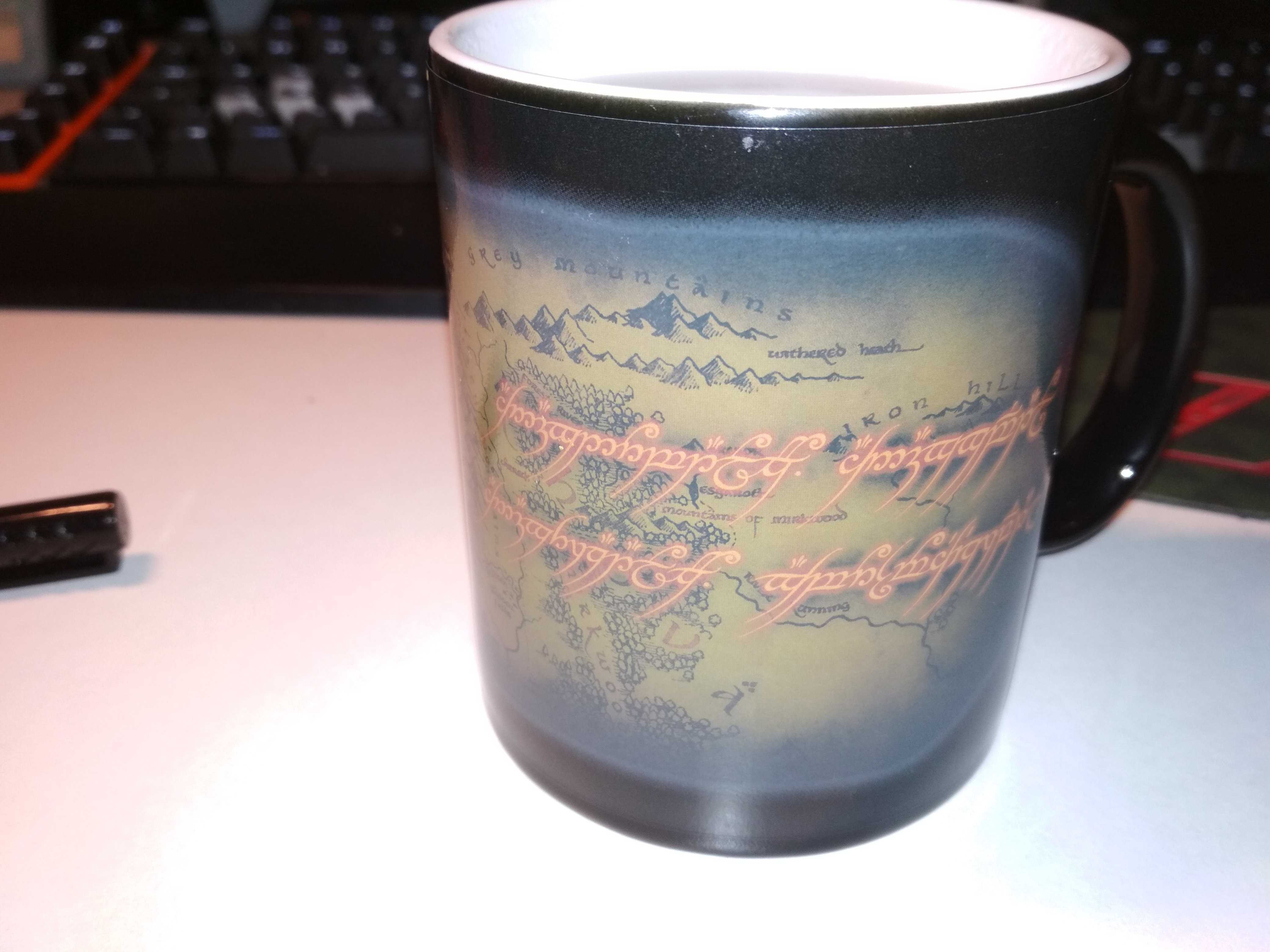
One beverage to rule them all. One beverage to find them. One beverage to bring them all and in the darkness bind them.
